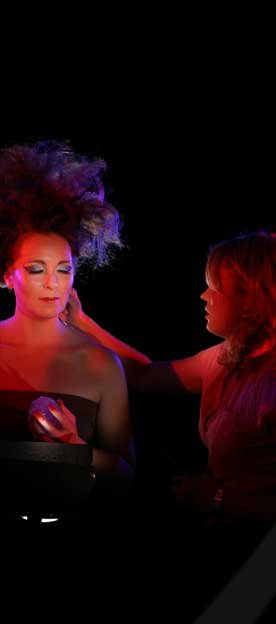

home | about | interviews | works | reviews | events | media
contact | links

Can you remember any specific songs that she used to sing?
Yes she used to sing Slieve-na-Man.
My mother's older sister was a self-taught musician. She used to take me to hear the Ulster Orchestra every Friday night, from about the age of six. Nobody was going to concerts then, because of 'the Troubles'. I heard an enormous amount of repertoire. Apparently I used to draw on the back of the programmes -the kind of energy that was happening in the music. I've seen one of the programmes, for a piece of Stravinsky - my drawings are very angular with sweeping shapes, almost like a graphic score! I wasn't composing then, rather I experienced things very visually, in colours and shapes.
When you were in your teens, art was almost as important to you as music, wasn't it?
Yes- art was what I was going to do, I had a place at Art College to do a Foundation year but I decided against it at the very last moment.
So what was it that changed your mind, then?
Music was more important. When I was twenty I began writing music and in a way, that began to replace my instinct for the visual. I left Belfast for London.
You have had a tremendous amount of international experience now, haven't you - you've travelled a lot and studied with so many people of different nationalities? Tell me how you came to study with Per Norgard.
In the early 1990's, I heard some of Per's music and wrote to him sending him some of my work. I got a phone call one evening in the student house where I was living. I remember that this really droll Danish voice said 'This is Per Norgard'. I went for eight months to Copenhagen . It was January, freezing and quite bleak, very grey skies and short days, it was like that for months. It was a challenge and I was alone but what I began to write there proved an important turning point for future work. This is where I really became interested in colour and orchestration.
continue...
interviews index
© 2005 Deirdre Gribbin
site design: track5.co.uk
"To place a new work between these masterpieces was to measure it against giants.
Yet, extraordinary as it may seem, Deirdre Gribbin’s What the Whaleship Saw seemed every bit as mesmerising as the Haydn or Bartok."
Richard Morrison
June 2004 The Times